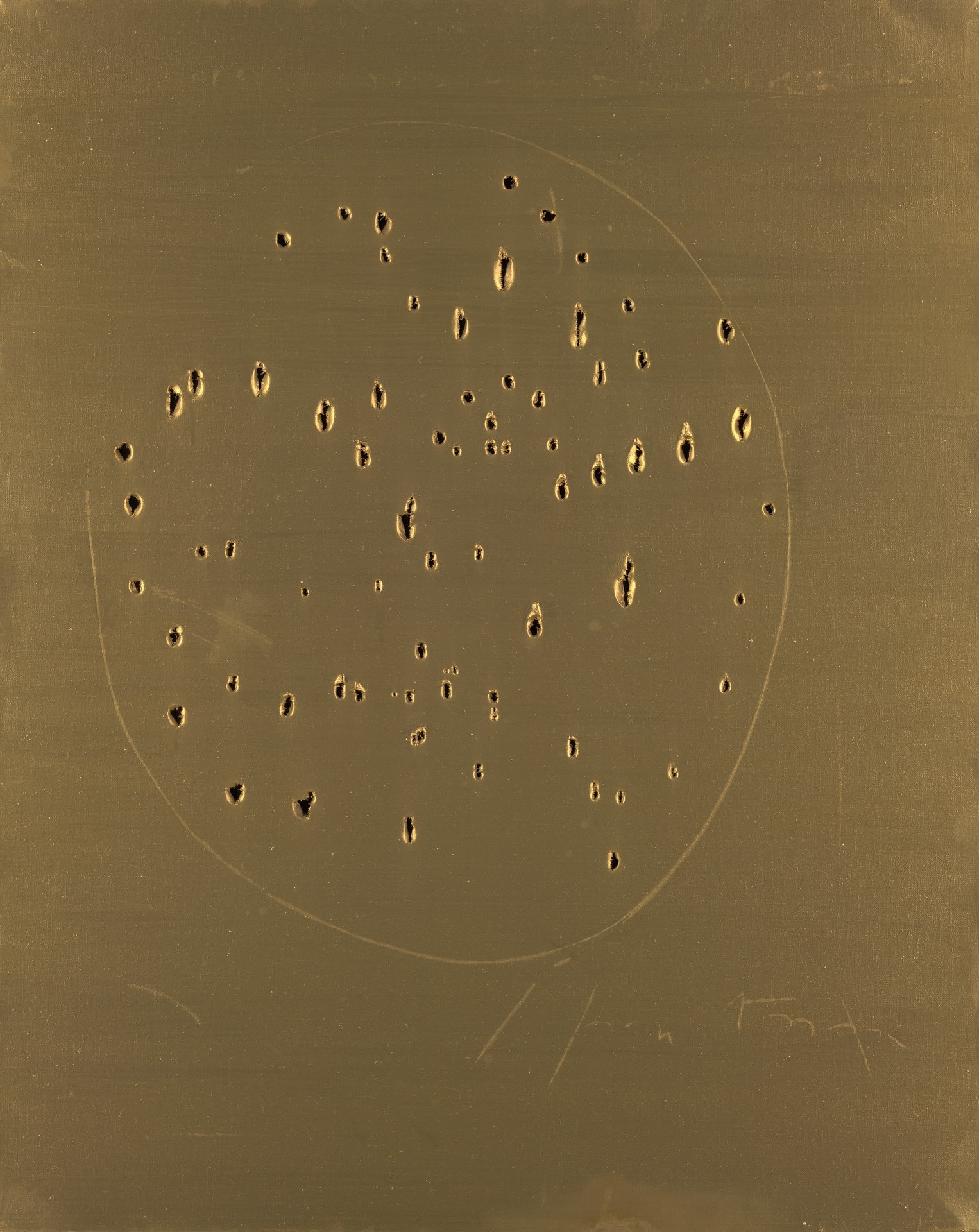Lucio Fontana and John Nixon
(A Dialogue)
Free entry
NGV International
Twenteith – Twenty-First Century International Art, Level 3
16 Dec 06 – 22 Apr 07
For this contemporary project, Australian artist John Nixon presents his recent work Silver Monochrome 2006 in conjunction with Lucio Fontana’s Spatial concept 1964-65. Conceived as a dialogue between two paintings, this project draws attention to the similarities and differences between the two artists’ approaches and is underpinned by Nixon’s continuing interest in the history and materiality of modernist painting.
As John Nixon states:
What are we presented with here?
A dialogue between two monochrome paintings: one gold, the other silver, one from the 1960s, the other from today. Both artists argue in their works FOR an expansive vision for painting that extends painting into real space, and AGAINST the notions of narrative, illusion or expressiveness as the functions of art. The task is to make dynamic artworks, to challenge and excite the viewer.
The case in these two works is principally one for experiment: Fontana makes artworks which he viewed as neither painting nor sculpture but SPATIAL CONCEPT; Nixon develops the possibilities for painting by extending the use of texture and shallow relief as part of his wider project EPW: SILVER. Fontana uses ‘the cut’ to activate not only the surface of the canvas plane, but the space behind and in front of it. Nixon constructs a painting with materials in real space.
The dialogue within the topic of the monochrome is here exemplified by the work’s differences, initially and most obviously in the differing dates and places they were made, but also in their varying sizes, colours, textures and forms, the very materiality of the works. Contrasting methods are used to activate the works’ surfaces; Fontana’s cut holes versus Nixon’s addition of bottletops.
The concepts within these artists’ bodies of works are driven by experiment and an economy of means. The works displayed are concrete evidence of each artist’s active, conceptual processes, the result (one of many in their oeuvre) of their investigation. While conceived and made independently of one another, these two works co-exist as objects side by side in the HERE and NOW.
John Nixon
Melbourne
October 2006
